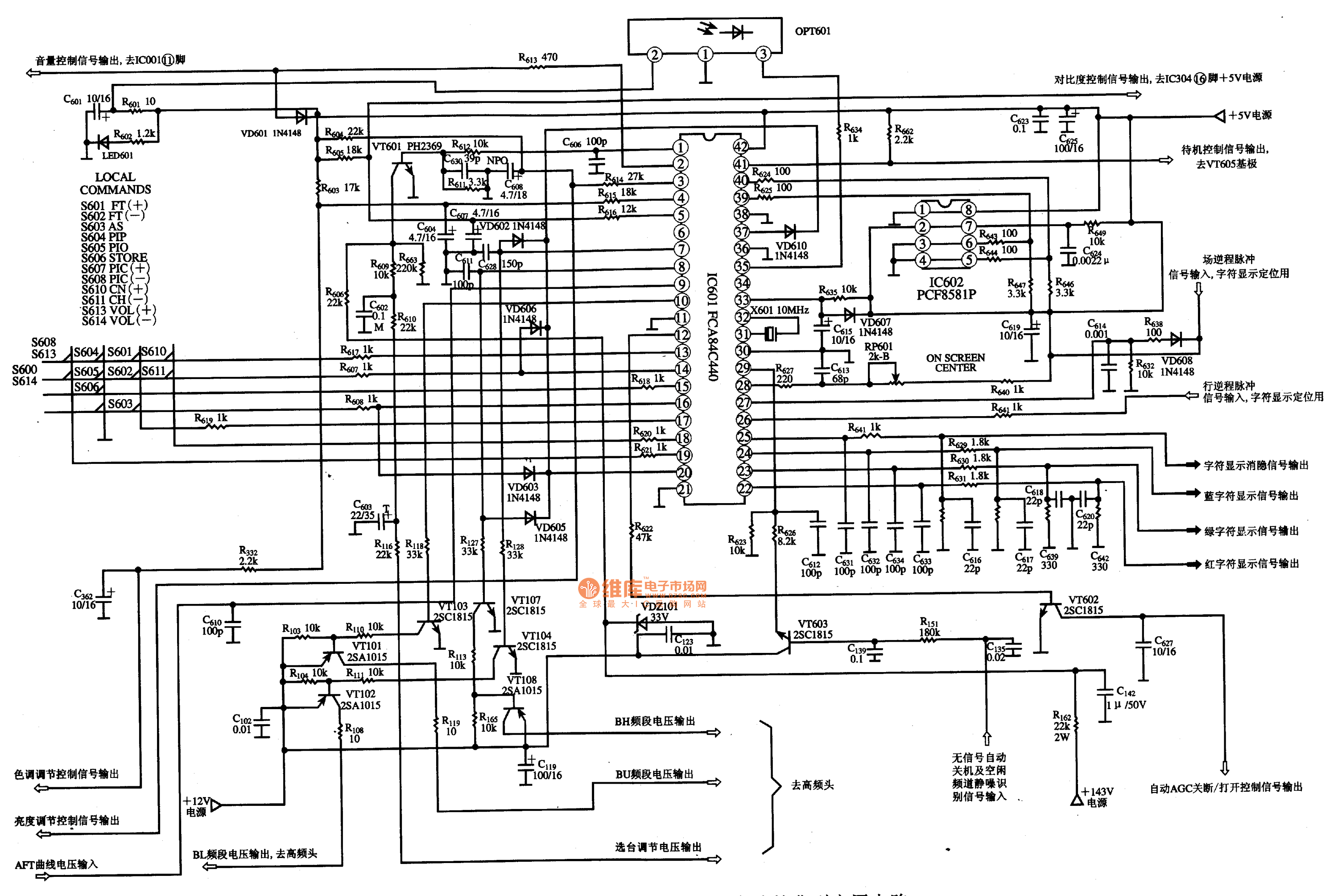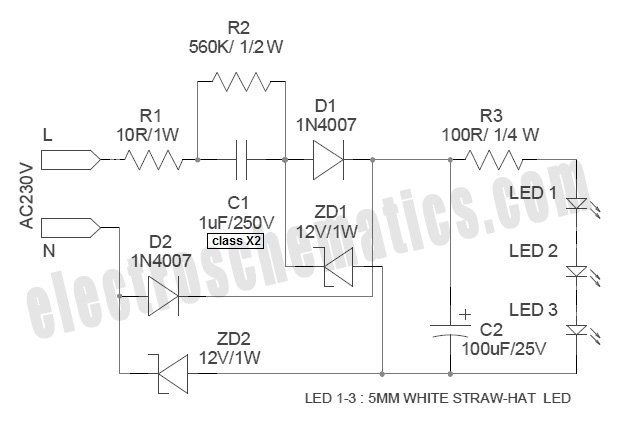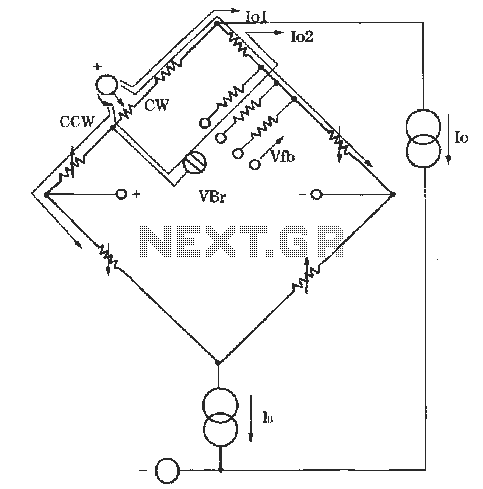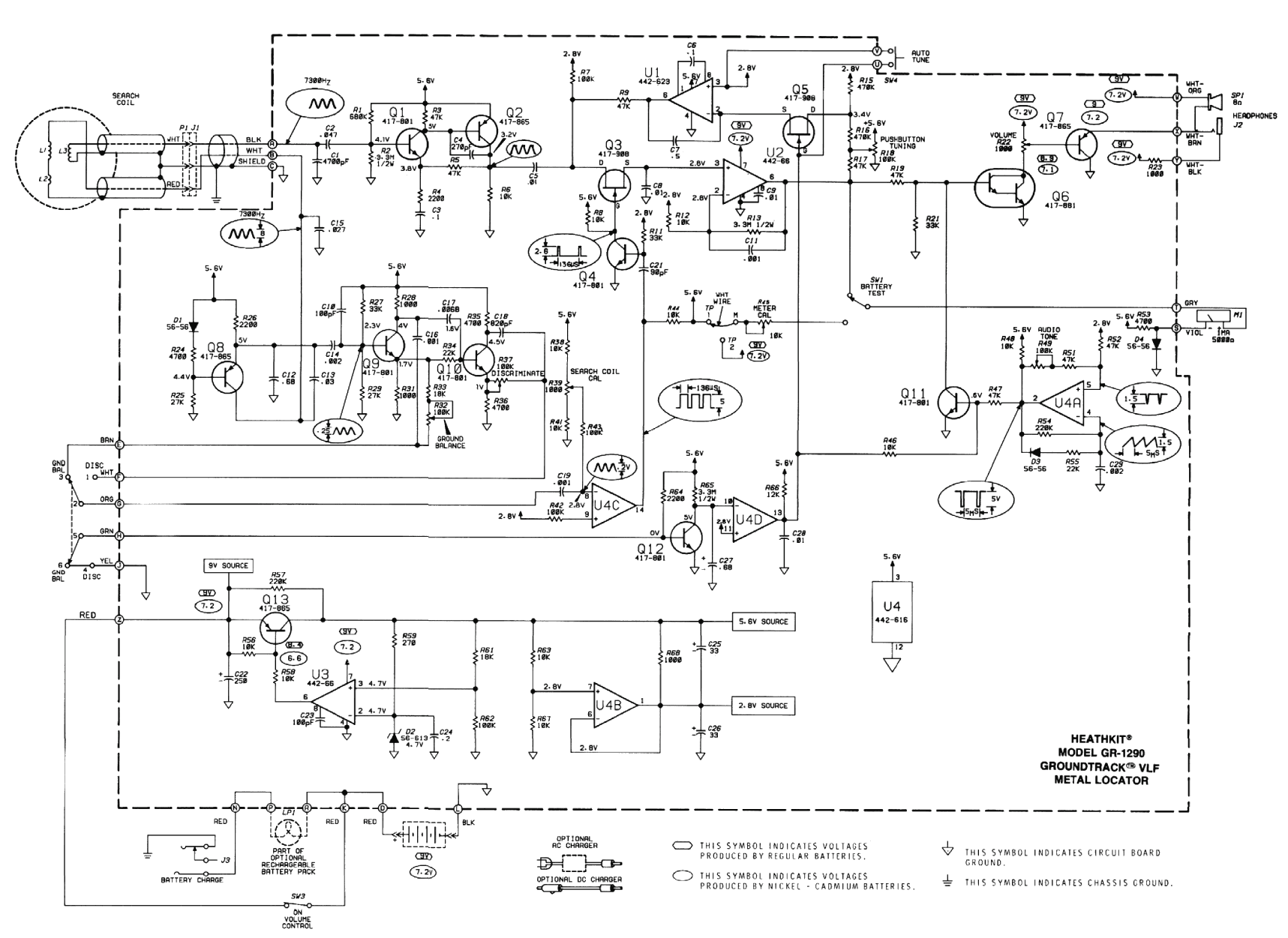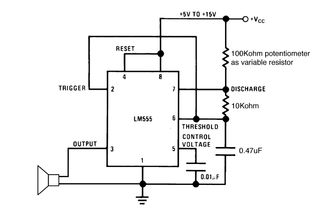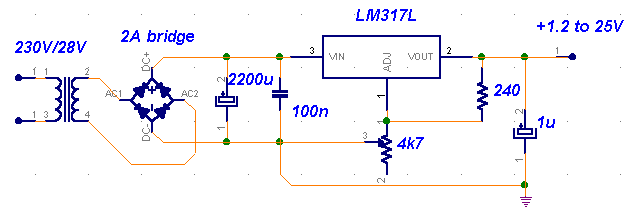
Thermocouple cold junction compensator AD596 597 a circuit diagram of Temperature Monitor
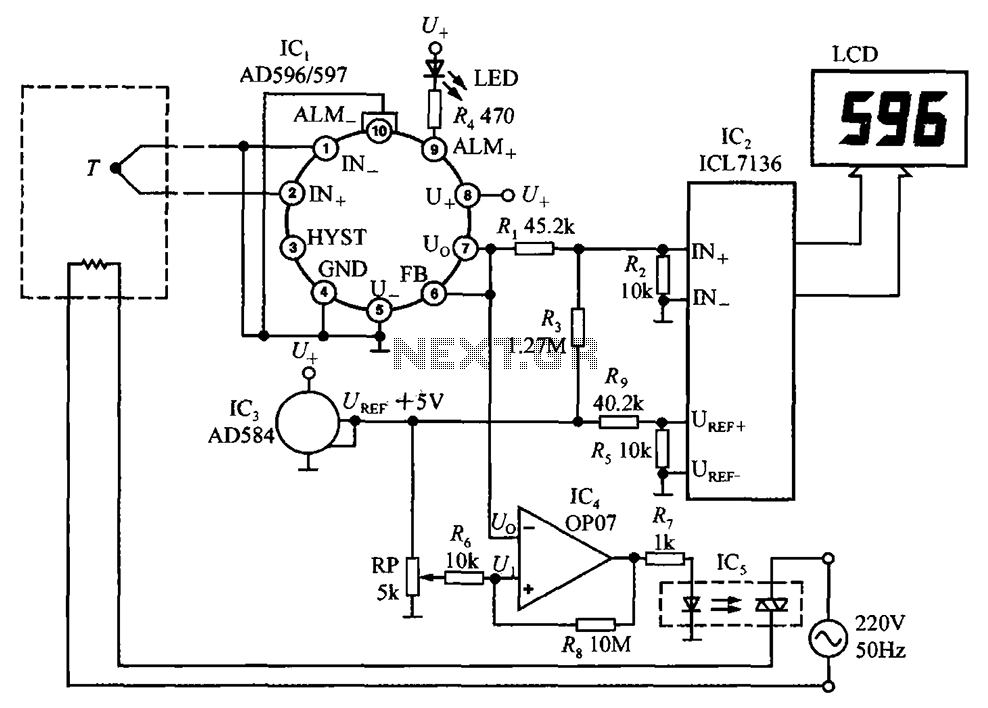
The circuit using AD596/597 forms a temperature measurement and control instrument. In this setup, AD596/597 (IC1) functions as a closed-loop thermocouple signal conditioner. IC2 is a monolithic CMOS 3 1/2 bit A/D converter ICL7136, which can also replace ICL7106, although this will increase power consumption. IC3 is a +5V bandgap reference voltage source AD584. The +5V reference voltage is processed through resistors R4 and R5 to provide a reference voltage of 1.000V for the ICL7136, which, along with an LCD display, serves as a 2V full-scale digital panel meter (DPM). IC4 is an OP07 operational amplifier. The potentiometer RP is used to set the temperature to be controlled (T1). An optocoupler (IC5) with a triac (TRIAC) is included in the design. The instrument is capable of temperature measurement, temperature control, and providing an open thermocouple failure alarm. The output voltage from AD596/597 is divided by resistors R1 and R2 before being fed into the ICL7136 as the analog input (IN+ and IN-). R1 is set to 45.2kΩ and R2 to 10kΩ, which allows the instrument to display the temperature in Fahrenheit (°F). By adjusting the resistance values of R1 and R2, the display can also show degrees Celsius. The output from AD584 provides a +5V reference voltage (UREF), which is then processed through potentiometer RP and resistor R6 to obtain the reference voltage (U1) for the inverting input terminal of the OP07 operational amplifier. The output voltage (Uo) from the OP07 is compared to U1; when Uo exceeds U1, the OP07 outputs a high signal to activate the optical coupler, turning on the electric heater connected to a 220V AC power supply to increase the temperature. Conversely, when the temperature drops below the set point, Uo becomes low, turning off the power and lowering the temperature. The system also incorporates an open thermocouple detection feature, indicated by an LED; if the negative thermocouple is ungrounded, the meter will overload, signaling an open-circuit fault.
The circuit is designed for precise temperature control and monitoring, making it suitable for various applications where temperature regulation is critical. The use of the AD596/597 as a thermocouple signal conditioner ensures accurate readings from thermocouples, which are widely used for temperature measurement due to their wide temperature range and durability. The ICL7136 provides a reliable means of converting the analog signal into a digital format for easy reading on the LCD display. The inclusion of the OP07 operational amplifier enhances the circuit's ability to process signals accurately, ensuring that the temperature control mechanism responds appropriately to changes in temperature. The use of an optocoupler for controlling the triac adds an extra layer of safety and isolation, protecting the low-voltage components from high-voltage circuits. Overall, this temperature measurement and control instrument is a robust solution for maintaining desired temperature levels in various environments. Circuit from the AD596/597 form a temperature measurement and control instrument is shown in Fig. Here, AD596/597 (IC1) as a closed-loop thermocouple signal conditioner use. IC 2 is a monolithic CMOS 3 1/2 bit A/D converter ICL7136, can also be used to replace ICL7106, but power consumption will increase more. IC3 is + 5V bandgap reference voltage source AD584, + 5V reference voltage after R4, R5 partial pressure ICL7136 to provide a reference voltage of 1.000V, composed by the ICL7136 and LCD display for 2V full scale digital panel meter (DPM).
IC4 selects OP07 operational amplifier. RP is the set point adjustment potentiometer for setting the temperature to be controlled T1. Optocoupler IC5 with triac (TRIAC) is.The instrument has a temperature, temperature control, and open thermocouple failure alarm. AD596/597 output voltage by R1, R2 divider to the ICL7136 after the analog input IN +, IN-. Take R1 45.2k, R2 10k, the instrument display Fahrenheit (oF). Appropriately adjusted R1, the resistance value of R2 can also display in degrees Celsius. AD584 output + 5V reference voltage UREF, after RP, R6 partial pressure to obtain the reference voltage U1, then OP07-inverting input terminal, an inverting input termination Uo.
When Uo u1 when, op07 output high, by optical coupler electric heater 220v ac power supply is turned on, the to heat up. when t t1 uo u1, of becomes low, turn off power, forcing it lower temperature. ultimately climate control. open thermocouple, led emits light. if negative thermocouple ungrounded, once open-circuit fault meter will overload.
The circuit is designed for precise temperature control and monitoring, making it suitable for various applications where temperature regulation is critical. The use of the AD596/597 as a thermocouple signal conditioner ensures accurate readings from thermocouples, which are widely used for temperature measurement due to their wide temperature range and durability. The ICL7136 provides a reliable means of converting the analog signal into a digital format for easy reading on the LCD display. The inclusion of the OP07 operational amplifier enhances the circuit's ability to process signals accurately, ensuring that the temperature control mechanism responds appropriately to changes in temperature. The use of an optocoupler for controlling the triac adds an extra layer of safety and isolation, protecting the low-voltage components from high-voltage circuits. Overall, this temperature measurement and control instrument is a robust solution for maintaining desired temperature levels in various environments. Circuit from the AD596/597 form a temperature measurement and control instrument is shown in Fig. Here, AD596/597 (IC1) as a closed-loop thermocouple signal conditioner use. IC 2 is a monolithic CMOS 3 1/2 bit A/D converter ICL7136, can also be used to replace ICL7106, but power consumption will increase more. IC3 is + 5V bandgap reference voltage source AD584, + 5V reference voltage after R4, R5 partial pressure ICL7136 to provide a reference voltage of 1.000V, composed by the ICL7136 and LCD display for 2V full scale digital panel meter (DPM).
IC4 selects OP07 operational amplifier. RP is the set point adjustment potentiometer for setting the temperature to be controlled T1. Optocoupler IC5 with triac (TRIAC) is.The instrument has a temperature, temperature control, and open thermocouple failure alarm. AD596/597 output voltage by R1, R2 divider to the ICL7136 after the analog input IN +, IN-. Take R1 45.2k, R2 10k, the instrument display Fahrenheit (oF). Appropriately adjusted R1, the resistance value of R2 can also display in degrees Celsius. AD584 output + 5V reference voltage UREF, after RP, R6 partial pressure to obtain the reference voltage U1, then OP07-inverting input terminal, an inverting input termination Uo.
When Uo u1 when, op07 output high, by optical coupler electric heater 220v ac power supply is turned on, the to heat up. when t t1 uo u1, of becomes low, turn off power, forcing it lower temperature. ultimately climate control. open thermocouple, led emits light. if negative thermocouple ungrounded, once open-circuit fault meter will overload.
